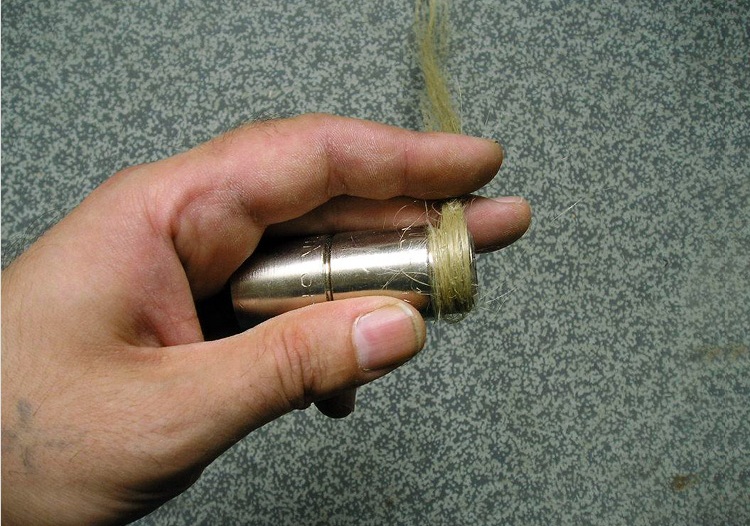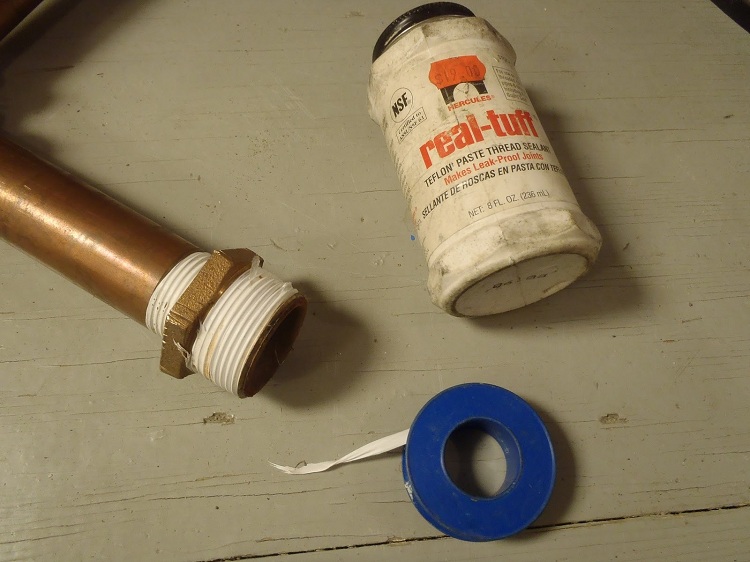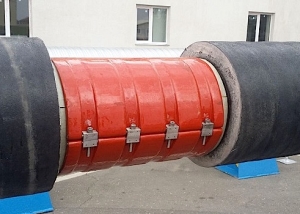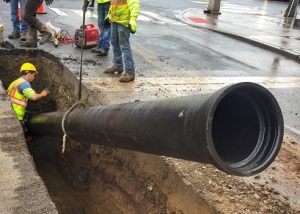When building a house or during repair work, as a rule, there is a need to deal with water supply. But after the purchase of structural elements and their delivery to the place, before proceeding with the installation, it is necessary to prepare the materials. Any experienced plumber will confirm that the most problematic sections of the pipeline include various interfaces and joints. That is why it is necessary to take care of sealant for water pipes.
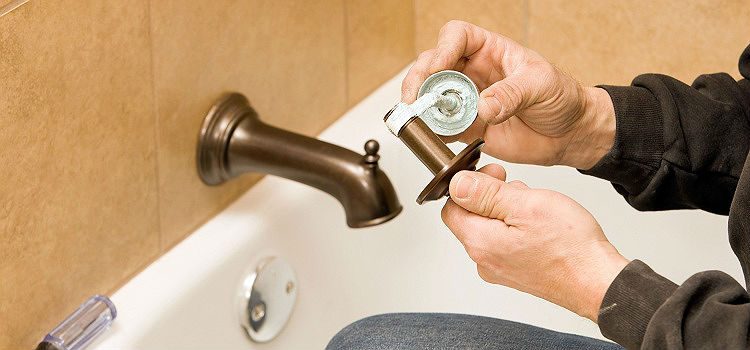
It is possible to seal the joints when installing a new water supply system by different methods, you only need to consider the material of the pipes
Sealant Types
Sealing materials are on the market in a large assortment. But this fact does not mean at all that any of them is perfectly suitable both for the metal system and, for example, for polypropylene water pipes. Therefore, in order to prevent leaks, it is necessary to study the properties of each of the proposed sealants. Especially a novice master.
Linen. Our great-grandfathers also used this plumbing sealant, connecting, at first glance, the pipeline elements with a threaded connection rather successfully. However, the work of organic fibers is based on the phenomenon of their swelling under the action of moisture. Therefore, when sealing flaxseed pipes made of brittle materials, an increase in volume can cause a rupture of the water supply.
There is another negative factor. Over time, wet flax fibers begin to decompose, due to which the quality of all compounds decreases. A constant presence at the joints of moisture will sooner or later lead to corrosion of the metal. Therefore, the dismantling of the water supply branch may be accompanied by a breakdown of its components. It should also be said about the inadmissibility of the use of dry flax in systems through which liquid is transported under high pressure. A little time will pass before it begins to seep.
Alternatively, consider using flax at the same time as paint. This solution is more reliable, but it is not without drawbacks. The fiber is not completely saturated with paint, which means that decay will still overcome the sealant, although this will require a longer period of time. In addition, it will not be easy to disassemble the pipeline.
The only solution for the correct use of flax fiber is to use silicone sealant for water pipes. The creation of threaded connections in this case is based on the processing of the die with silicone material. And as a result, the installation of pipes and fittings is greatly simplified and, in addition, the elements can be tightened.
Good to know! Silicone sealant ensures tightness of the pipeline, even if the elements of the water supply branch are not fully tightened.
Teflon sealant (FUM). This polymer tape is a thin strip wound on a bobbin. Initially, its production was aimed at providing defense applications, and not for plumbing. This specificity led to the presence of FUM sealant's unique properties. This sealant:
- perfectly copes with the effects of aggressive environments;
- withstands temperatures up to + 300˚С.
That is why professional plumbers prefer this sealant for pipes of water supply systems.Reliable leakage protection is provided by a thin tape wrapping of the threaded metal joints.
Of the advantages of the FUM sealant, experts distinguish:
- the material is absolutely not susceptible to decay, which prevents metal corrosion throughout the life of the water supply;
- during installation, the friction of the threaded elements against each other is reduced due to the ideal smoothness of the tape, which affects the quality of the assembly and the durability of the water supply system.
However, in some cases, the advantages of FUM sealant can be regarded as disadvantages. For example, a poor reaction of the tape to vibration can lead to depressurization of a high-pressure water supply. You should also be aware that when repairs are carried out on a section of the water supply system, the return stroke of the element causes a depressurization of the pipeline. Then the winding of the FUM tape will have to be carried out again.
In general, this seal is ideally suited for the installation of water supply elements that do not need positioning. Install valves, mixers and taps better using a different type of sealant.
Plumbing thread. Such a sealant is a dense plumbing thread impregnated with an antiseptic. This special tool prevents depressurization of water pipes, metal corrosion and rotting of the material of the thread itself. The fundamental difference from flax is in the positioning angles of the elements of the water supply branch. Installation of engineering communications using plumbing threads provides the possibility of a reverse stroke of the components up to 180˚, while the use of flax - only up to 90˚. The cost of such a sealant exceeds the price of another type of product.
Sealants in suspension. These materials are issued in cylinders. With their help, lubrication of all connections of the water supply system is excellent. But sealants in suspension can only be used in tandem with fiber products. Such material in its pure form will simply be pushed out of the system, and this phenomenon is especially manifested in pipelines operating at high pressure.
Good to know! Working with a drying agent is not the best solution, since at the final drying the sealant will give a noticeable residue.
The exception is only anaerobic sealant for pipes of the water supply system. It is able to dry even without air. However, its volume does not change, which protects the pipeline from leaks, and the metal from corrosion.
The following advantages are inherent to the sealing anaerobic gel:
- excellent adhesion provides a high-quality connection of the elements of plastic and metal pipelines;
- it is allowed to use anaerobic gel not only in standard plumbing systems, but also in aggressive environments, since it is completely inert to the negative effects of chemical suspensions;
- sealant of this type has proved itself well when working in pressure and pressureless water pipes;
- excess gel is easily removed with a napkin because it does not harden in air.
However, you should know the features of its application. If work is carried out at a temperature below room temperature, high-quality sealant application will not work without heating the pipes. In addition, there is another point. Before starting to apply the gel, all threaded connections must be cleaned and degreased. The dismantling of the elements of the water supply branch, inside which there is an anaerobic sealant, is also carried out with preliminary heating of the damaged section of the pipeline.
Sealing cast iron pipes
This topic deserves a separate discussion, since cast-iron pipes are usually produced with a bell.After laying the pipes one into another, the joint is minted with organic plant fiber saturated with mineral oil. In plumbing, the fiber prepared in this way is called a heel. And the joint sealing procedure is performed using a special tool, similar to a large screwdriver - coinage. The heel is hammered by chasing tightly to the joint, and winding can be done in several circles. After minting, the joint must be greased with mortar. It is desirable to do it with the addition of an ingredient such as PVA glue due to its high ductility.
There is another old method - this is the strait of junctions with hot sulfur. However, it has not been used for a long time, since it can adversely affect the health of housing residents. In addition, the process of extinguishing burning sulfur with water is accompanied by the release of a sulfuric acid concentrate.
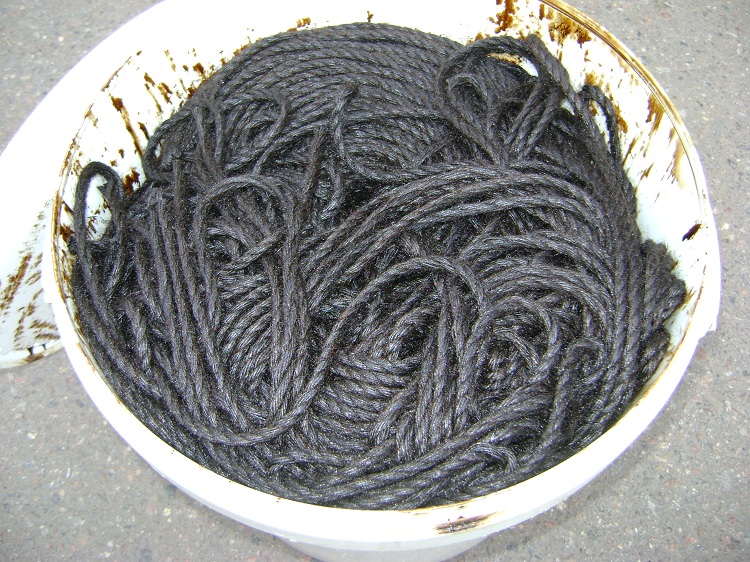
The connection of the bell-shaped cast-iron pipes is sealed with a cable - a thin cord soaked in oil or resin
Currently, for cast iron pipes, mainly plumbing sealant is used. Sockets are also present on these tubular products, but they are equipped with a rubber cuff, which itself seals joints well. After tightly fitting pipes one on top of another, a sealant is used for polypropylene pipe products.
Advice! Before starting operation of the water supply branch, wait until this agent has completely dried. The term is usually indicated in the instructions for use. At the same time, experienced plumbers recommend starting to use the water supply system not earlier than two days - then complete drying will happen for sure.
Sealing water pipes
This method is the easiest way to deal with leaks in the water supply system. Even professionals use it to this day. But in order for the work to be completed successfully, a number of points should be taken into account. In a concise wording, they sound like this:
- proper selection of material. The tow should be soft and thin, without inclusions of any kind;
- accuracy when performing work. Tow is impregnated with a special substance, traces of which, sometimes, are removed with great difficulty;
- finish processing. The tow fibers remaining in sight will be carefully removed after sealing.
The following is the procedure for completing joints with this sealant for water pipes.
- First, divide the tow into several strands. The recommended thread thickness is 1 millimeter, but in practice the value of this parameter is determined by the characteristics of the thread.
- Apply a small amount of impregnating agent to the threads of the ends, evenly distributing them on the surface. This paste will act as glue for tow.
- Wind the fiber clockwise around the right-hand thread. If the thread is left-handed, then naturally in the opposite direction.
- Soak the wound to the end soak with the product.
- Then connect the pipes together.
It is not possible to pinpoint the required number of windings. Therefore, it is recommended to do test runs of water. The appearance of leaks will tell that tow is not enough. But using it in excess is not the best solution. When tightened, the thread may simply break and the pipe will become unsuitable for installation.
